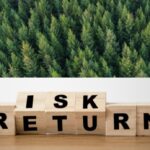Earlier this month, The ForestLink had its first birthday! With this milestone, I’ve paused to reflect on this last year and the trends I’ve observed. I have also dared to look into my crystal ball for what I expect to see in the year ahead.

1. Carbon is an important part of early-stage forest projects
There hasn’t been a project I’ve worked on in 2021 that didn’t incorporate forest carbon or climate aspects into it in some way. That said, I’ve noticed that I gravitate towards strategy development and early-stage forest project work, where carbon has become such a valuable return driver for early-stage forest investments in the tropics. It is mobilizing new investors (think net-zero companies) and as such, is increasing the bankable universe for mainstream investors later down the line. With the rise in demand for forest investments yielding carbon returns, there has also been huge development in the auxiliary services required to validate credible projects –numerous remote sensing and carbon calculating platforms come to mind. I have also seen a mix of supply and demand for forest projects that deliver both certified and non-certified carbon benefits.
2. Education in forest investment is still lacking:
On educating investors
I’ve had several discussions with impact investors unfamiliar with the forest asset class. In many circles, impact investing is narrowly focused on social impact (not to undermine its importance), and as climate and biodiversity issues start to play a more prevalent role in impact circles, the interest in exploring natural capital options is increasing. However, how to invest in forests for many is still so complicated. At risk of generalizing, the impact investment space is fearful of commercial reforestation, sustainable forest management, and wood products. There needs to be more education on the importance of a working forest – providing renewable alternatives to heavy emission materials, like concrete, steel and plastic. Furthermore, that sustainable forest management can contribute to an increase in biodiversity and reduce pressure from vulnerable intact forests at risk of degradation and deforestation, needs to be more widely communicated. I can’t believe us foresters still haven’t cracked that egg! I digress… Socially, forest investments in the tropics also deliver significant benefits – not only job creation, but in all-round rural development and empowerment of marginalized people. Globally, if we don’t invest into more sustainably managed forests – climate change will worsen, biodiversity will continue to decline, which will negatively affect food systems and contribute to mass migration. And then there’s the financial investment case. Long-time horizons, and unfamiliarity with how forest assets are valued are critical roadblocks to investment. Staggering forest investments into phases, with impact-first and/or carbon investors coming in at an early stage, and mainstream investors entering closer to cashflow generation is key to removing these blocks.
On educating forest managers
Reputational risk and greenwashing are also concerns at the forefront of investors minds. Here, there is some work to do for those of us closer to the ground. Forest managers need to understand these investor concerns. More management emphasis needs to be on the integration of the full suite of sustainability issues. Where Managers are singularly focused on operational performance, this is where reputational risk lies lurking in the shadows. At the end of the day, I bet if you asked an institutional investor if a hundred basis points on their return was more important than avoiding negative headlines associated with their investment, they would disagree.
3. Regulatory requirements affecting forest investment are evolving
With the inception of the EU Sustainability Taxonomy and Regulation, investors and asset managers are adjusting investment strategies, risk and compliance management, and reporting frameworks to make sure they are fulfilling requirements. The forest asset class is a naturally aligned option for investors, but claiming this alignment is no longer a game of words. To prevent greenwashing, investors claiming alignment need to manage, measure and report on elements, such as climate change mitigation, biodiversity protection, and restoration – that previously they took for granted.
Just as investors were becoming familiar with the Taskforce for climate related financial disclosures (TCFD), enter the Taskforce on nature related financial disclosures (TNFD). Where the former is inherently “easier” because measuring greenhouse gas emissions is something tangible and cross-sectoral, measuring nature impact is much more complex. Ecosystems and biodiversity across the world differ immensely, and there is a spiderweb of effects (many of which are unknown) that can take place from a single activity. The important thing right now, is to start managing for biodiversity. Identify some key indicators for your forest investment that could impact or be impacted by biodiversity loss, consider how operations can result in a nature positive impact, and manage, measure and report on your progress. One thing is clear – it is no longer possible to just say that your investment is climate and nature positive, this needs to be demonstrated.
4. Organizations willing to learn by doing have the greatest potential to realize urgency
A common thread, that unfortunately is a lingering trend from the past, is the failure by mainstream investment to act urgently on forest landscape restoration. Institutional investors remain cautious for the reasons I mentioned in the Education trend. However, more promising (and more impactful) are the investors and companies that are not waiting until they have all the data to invest. With the up-swing in governments’ and the private sector interest in nature-based solutions, innovative forest landscape business models are starting to emerge. Because these are new, there just isn’t the data available to prove the investment case. Thus, it is those investors (and they are out there), who value the impact and learning available from these projects, as well as the generation of data that will lead to more investment opportunities in the future, that are rising to the urgent challenge of improving forest landscapes.
5. Complexity kills
I remember back at university when one of my professors said, “Forestry isn’t rocket science, its much more complicated than that”. He was right. It’s the complexity of forestry – ecosystem and climatic dynamics, management of the forest resource for a variety of values over long-time horizons, putting a price-tag on those values, and then all the indirect factors that both impact and are impacted by the forest that make it difficult for investors to understand.
On the finance side, complexity can kill transactions. Investors or strategies with overly stringent or impossible to achieve investment criteria, can reduce the investible universe. An example of this could be a strategy that wants to achieve significant climate benefits, yet also requires it to be generating positive cashflows (ie. a mature forest, where carbon sequestration will have levelled off). Another side of investor complexity that kills transactions is in investment processes. This is more an issue for multilateral, or public investors – where there are complicated procedures and investment committees spanning several organizations and individuals. This can make a due diligence and transaction phase span years, where the project under consideration may be dead in its tracks by the time the investors make a decision.
On the other side, projects can also create complexity. In the age where the importance of realizing the multiple environmental and social values that forest investments have to offer, a project can become too complicated to manage effectively. By trying to manage everything, you end up managing nothing – or burning a great deal of cash in the effort. This can kill a project’s commercial viability, its reputation, and lead to other lasting negative impacts on the ground. As mentioned before, it is important to take an integrated view to sustainable forest management, but careful consideration should be made as to what this looks like for any one project.
What’s in store for 2022?
If I were to predict what trends we will see emerging (or lingering) for forest investments in the tropics in 2022, this would be my list:
- More net-zero corporate and impact investor investments into forest projects,
- Best practices emerging on how to simplify forest impact MRV,
- Mainstream investment into forest investments in the tropics is still lagging (I think this will take a few more years),
- Multilateral catalytic funding is still too slow for prospective investees,
- Innovative ways to tackle the urgency issue of forest restoration, wood supply and forest protection in the tropics (new partnerships and fast-acting financing facilities) will emerge.
If you resonate with any of these trends and are looking for ways in which your forest business or investment organization can leverage the opportunity or solve the challenge, please reach out, and let’s explore how we can make 2022 a good year for forest investments in the tropics.




